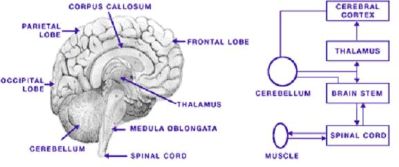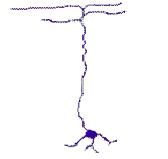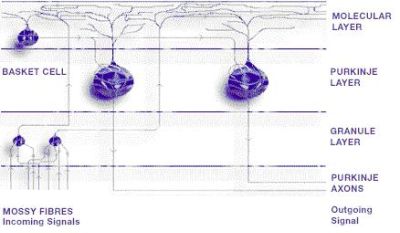
Your face is the future at Healthlab! Three-dimensional 3-D facial recognition system in being installed to secure your health site. MediFACE is an ASP platform that will allow you, the patient and only you, to login to Healthlab® over the Internet with your web camera. If you feel that this technology is obtrusive to your privacy and your life style, consider who you want to view your medical data. By using your simple web camera attached to your computer, MediFACE can identify your healthy FACE and allow only you, access to your laboratory health profile.
Please visit our partner ALIVE Tech, Inc. to have some of your questions answered concerning "space-age" human recognition and the cognitive power of Acsys Biometrics 3-Dimensional Facial recognition platform.
We are currently creating LOGIN for this section. In order to be able to keep up with our high standards of service, we need a little more time. Please stop by again. Thank you for your interest!
MediFACE login expected SPRING 2010 and counting.
QUICK TOUR OF HOLOGRAPHIC QUANTUM NEURAL TECHNOLOGY - Introducing the Exciting New Field of Biomimetic Intelligence / AND Corporation is the Inventor of Application Development of HNeT For the Proposed Utilization in Patient Identification Process.

This figure provides an overview of HNeT biomimetic intelligence. Biomimetic intelligence models cell inter-connectivity and signal processing aspects of actual neuron cell assemblies within sections of the brain referred to as the neo-cortex (gray matter or outer layer), the cerebellum (near the base of the brain) and the hippocampus. The HNeT system allows one to construct cell assemblies ranging in capability from supervised feed-forward systems, to more advanced spatio-temporal and hyperincursive models.
HNeT cells have been given biological names due to their similarity to specific classes of neuron cells (i.e. the granule, stellate / Martinotti, pyramidal, and Purkinje cells). The following provides the application engineer with a brief overview of the biology upon which HNeT is modeled.
Cerebellar Model
Structure of the cerebellum (reptilian brain), and organization of cells is quite different from the more recently evolved neo-cortex (mammalian brain). Construction of the cerebellum is divided into: the outmost molecular layer, Purkinje layer and granule layer. The most predominant cell types are the Purkinje and granule cells. The cerebellum has a two staged cell assembly construction (granule -> Purkinje), as opposed to the three staged construction of the neo-cortex.

The following brief summary describes structure in biological terms. For clarity, neuron cell dendrites receive input signals and neuron cell axons relay output signals.
Purkinje Cell
Granule Cell
Structure of the Cerebellum
PURKINJE CELL
This is the principal cell of the cerebellum. The Purkinje cell body is located in the Purkinje layer between the molecular layer and granule layers. Dendrites of the cell extend through the molecular layer to synapse with axons of granule cells. The Purkinje cell possesses up to 150,000 synaptic spines (connections). Each Purkinje cell possesses one axon, propagating signals to cells within the brain stem and thalamus. It is estimated that there are about 15 Million Purkinje cells in the human cerebellum.

GRANULE CELL
These cells are very small in comparison to the Purkinje cells, but far more numerous. It is estimated that ~2 x 1E9 granule cells exist within the cerebellum, located in the deepest cortical layer of the cerebellum called the granular layer. Granule cells have only from three to seven dendrites, receiving signals from the brain stem and cerebral cortex. The axon of the granule cell courses vertically through the Purkinje layer and arborizes forming many branches and establishing contact with 200 to 500 Purkinje cells. Each Purkinje cell receives approximately 150,000 synaptic inputs from the granule layer.

STRUCTURE OF CEREBELLUM
A schematic of the cerebellum is presented below. Afferent (incoming) signals are received from the climbing fiber system from the mid brain, thalamus, and neo-cortex. Each climbing fiber synapses with between 20 and 40 granule cells. Granule cells integrate incoming signals, transferring their axonal (output) signals to the dendrites of Purkinje cells. Synaptic connections between granule axons and the dendritic processes of Purkinje cells are located within the molecular layer. The Purkinje cells themselves have axonal processes which form the only efferent (outgoing) signal from the cerebellum.

Similar to the neo-cortex, granule cells preprocess incoming signals performing a combinatoric expansion through generation of higher order scalars. Expansion to third - fifth order products are often sufficient to permit Purkinje cell memory storage densities exceeding 100s of thousands of stimulus-response patterns. This expansion process provides non-linear mapping capability to the Purkinje cell. The cell assembly formed by the combination of granule and Purkinje cells form the basis of the cerebellar model within the HNeT2000 Application Development System.

One may use the cerebellar model to construct simple cell assemblies comprised of only four cells. Despite the simple structure, cerebellar assemblies may perform real time learning over large numbers of stimulus-response patterns ( >> several thousands). This cerebellar structure forms the basis for the HNeT SL Platform, and the various HNeT applications shown on this website collated from John Sutherland, inventor of HNeT SL Platform. Please visit this link for a full overview of the Technology of Facial Recognition Neural Device.
|